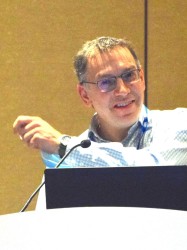BibTex format
@article{Jackson:2020:cid/ciz719,
author = {Jackson, D and Pitcher, M and Hudson, C and Andrews, N and Southern, J and Ellis, J and Hoschler, K and Pebody, R and Turner, P and Miller, E and Zambon, M},
doi = {cid/ciz719},
journal = {Clinical Infectious Diseases},
pages = {2505--2513},
title = {Viral shedding in recipients of live attenuated influenza vaccine in the 2016/17 and 2017/18 influenza seasons in the United Kingdom},
url = {http://dx.doi.org/10.1093/cid/ciz719},
volume = {70},
year = {2020}
}

